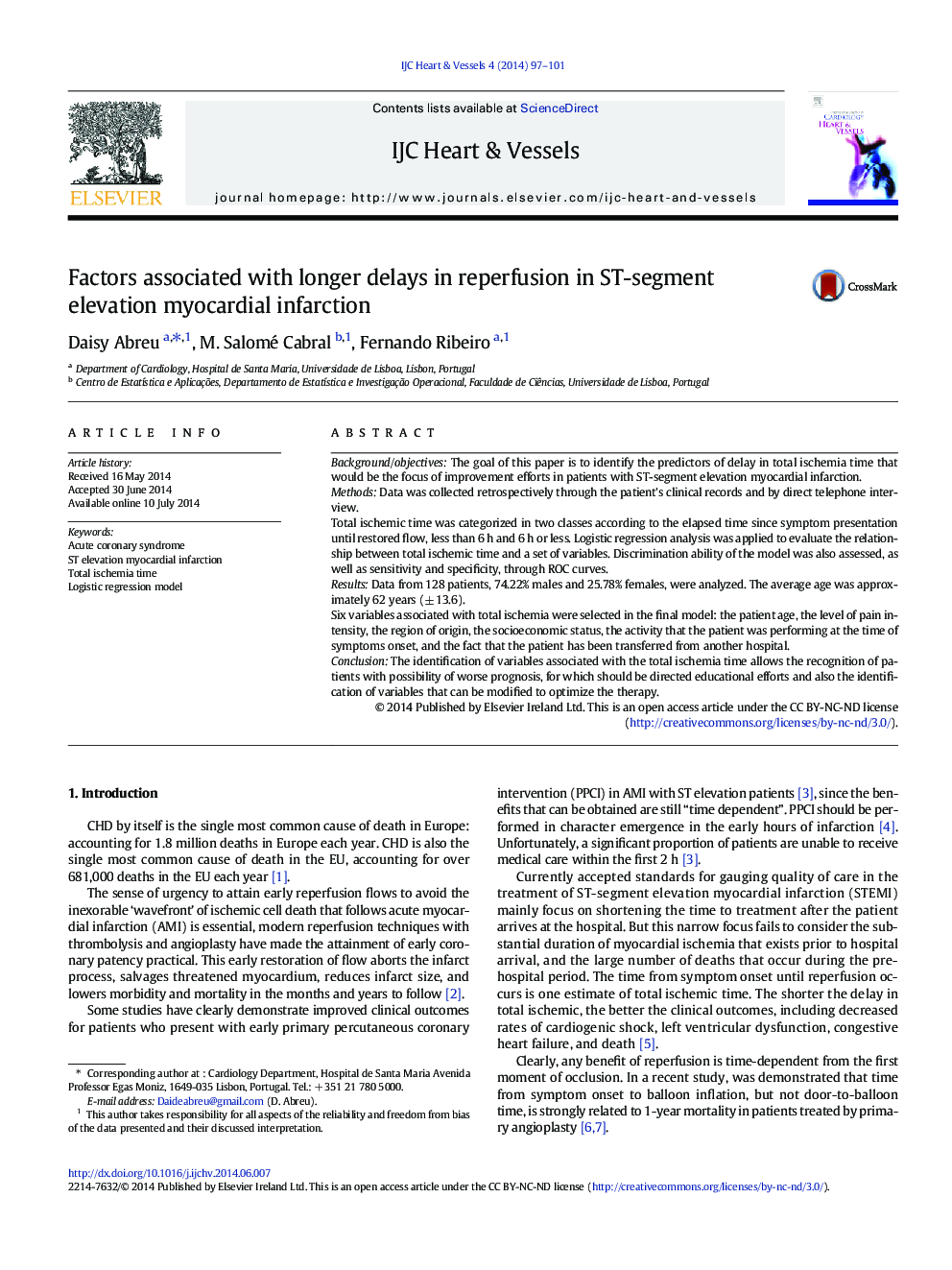| Article ID | Journal | Published Year | Pages | File Type |
|---|---|---|---|---|
| 2927101 | IJC Heart & Vessels | 2014 | 5 Pages |
Background/objectivesThe goal of this paper is to identify the predictors of delay in total ischemia time that would be the focus of improvement efforts in patients with ST-segment elevation myocardial infarction.MethodsData was collected retrospectively through the patient's clinical records and by direct telephone interview.Total ischemic time was categorized in two classes according to the elapsed time since symptom presentation until restored flow, less than 6 h and 6 h or less. Logistic regression analysis was applied to evaluate the relationship between total ischemic time and a set of variables. Discrimination ability of the model was also assessed, as well as sensitivity and specificity, through ROC curves.ResultsData from 128 patients, 74.22% males and 25.78% females, were analyzed. The average age was approximately 62 years (± 13.6).Six variables associated with total ischemia were selected in the final model: the patient age, the level of pain intensity, the region of origin, the socioeconomic status, the activity that the patient was performing at the time of symptoms onset, and the fact that the patient has been transferred from another hospital.ConclusionThe identification of variables associated with the total ischemia time allows the recognition of patients with possibility of worse prognosis, for which should be directed educational efforts and also the identification of variables that can be modified to optimize the therapy.
